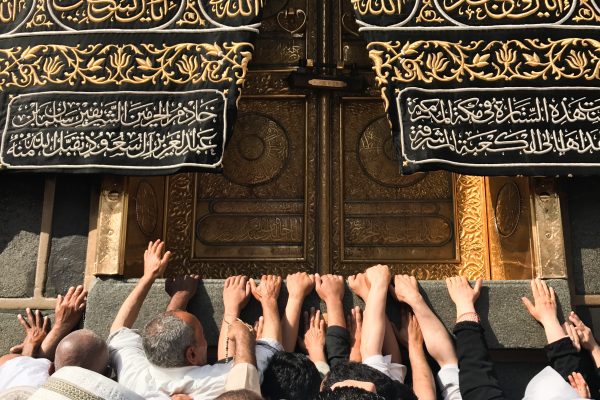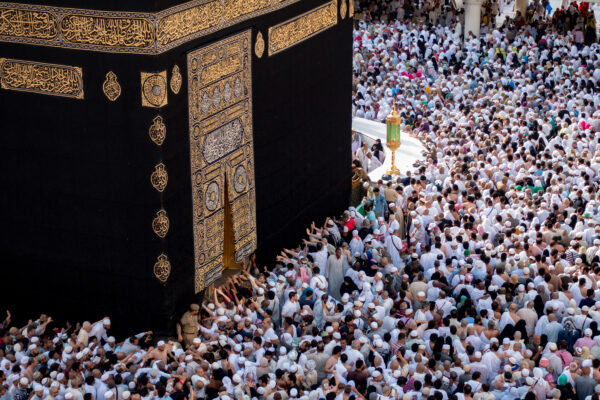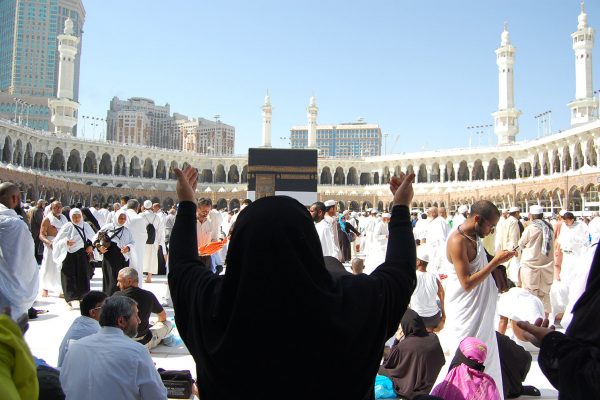Why has the spiritual grandness of hajj remained just as powerful as it was when first performed?
Why has the spiritual grandness of hajj remained just as powerful as it was when first performed?
Hajj is one of the most important pilgrimages in Islam, which leads us to a sense of unity. The humanitarian message of ‘one world, one people’ announced by Hajj many centuries ago has a lot of relevance. Even today, millions of people come out for that holy act as if it were a response to an invitation made by the Prophet Ibrahim (A.S.), thousands of years ago.
Ibrahim (A.S) is not a prophet revered only by Muslims, but he is followed and honoured by various religions and schools of thought across the entire Semitic religion and beyond. In that case, the search for the sense of unity involved in the act should begin with the person who invites to Hajj. It is similar to the fact that the Creator has appointed a prophet who is accepted by all to invite those who come to his house until the last day.
By the command of God, Prophet Ibrahim (A.S.) called everyone, and for that people come together, in groups, and perform the Hajj every year until the end of the world.
The place where the Creator told us to gather together for Hajj has many characteristics. Mentioning the obligation of Hajj, the Qur’an teaches that “Indeed, the first place where the most important shrine for people was established in “Bakka”. It is filled with virtue and guides everyone. It is rich with sacred heritage including “Maqamu Ibrahim”. Whoever enters it fearlessly, and whoever is able to perform Hajj by way of that path, it is obligatory for him to perform Hajj for the sake of Allah.”
Even before mentioning that Hajj is obligatory here, the Holy Quran speaks about the place and its characteristics. The ancient name of Makkah “Bakka” is mentioned here. There are scholars who have said that the meaning of the word itself is the place where the crowd gathers. The Qur’an describes that land as a guide for all the worlds. Allah also says the need for people to gather together on this moral ground.
The Qur’an describes Makkah and the Kaaba like this in many places. Allah warns that whoever thinks of violence in the vicinity of the Kaaba and in the holy land, We will make him taste a painful punishment. At the beginning of the same verse, Allah says that all are equal in the vicinity of Masjid al-Haram. It teaches that there should be no discrimination. Indeed, non-discrimination is a clear path to unity.
Even the geographical features of the Ka’bah support these facts. The Kaaba is exactly in the center of the globe. The Kaaba is known as a lamp in the center of the earth that gives light to all. In the studies, we can also find comments that by placing the Kaaba in the center of the earth, the Lord means a wider goal that all the people in this world can meet in one rhythm around the Kaaba. What other structure in the world can claim this distinction? Is it possible to build something like that?
Each of the various holy places visited by a believer performing the Hajj has a hundred stories to tell, bearing witness to the many beautiful moments of unity and togetherness from the beginning of the human race to the present day. History has it that the first father Adam (A.S.) and mother Hawwa met at Arafa, the main ritual of Hajj. Like this, there are many historical lessons to be imparted to every step and step of the Hajj.
Prophet Muhammad (pbuh), in his last sermon in Arafa , said, “All mankind is from Adam and Hawwa, an Arab has no superiority over a non-Arab nor a non-Arab has any superiority over an Arab; also a white has no superiority over black nor does a black have any superiority over a white except by piety and good action.” This universal declaration of humanity is the most attractive essence of Hajj pilgrimage.
As one sets out for the Hajj, he becomes a link with the people, crossing continents and oceans from different parts of the globe. Then they circle the sacred space as one, counting the beads on a necklace. Calling out to the Creator that we all have come to answer you, they perform the Hajj with the conviction that they are all brothers who have come together as a result of the invitation of Ibrahim (a.s.) thousands of years ago. Look at the spectacle of Hajj itself. Doesn’t that go without saying the whole beauty of unity and togetherness is here?
From the Hajj memories of many prominent people, the world learned mainly about the sense of unity that Hajj brings. The experience of Malcolm X who fought for the emancipation of black people in America is important in this. He believed in and advocated for black nationalism or he was of the mindset that blacks and whites can never live together and live in harmony, so blacks should fight for their nationalism based on their own identity. What led Malcolm X to this thought was the brutal discrimination and racial attacks he saw and experienced since childhood. But with his Hajj journey in 1964, he changed drastically.
After “experiencing” the Hajj, he was convinced that the world could copy all the values he saw in the Hajj beyond just human unity and global brotherhood. Malcolm X later spoke to the world: ”It may come as a shock to you to hear these words from me, but what I saw and experienced in the Hajj changed many of my ingrained ideas. Forced me to continue and finish many things I had previously finished. Nowhere have I seen such a sense of brotherhood as in the Hajj, not merely superficial, but brotherhood in spirit, practiced by men of all races and colours”.
Malcolm X’s reimagining of Hajj was about the unity in which all live under one God. He reaches that reality through the act of Hajj. This is how he comes to the famous thought that true sincerity, true faith, and true willingness to sacrifice create a sense of unity in a person.
While understanding the jurisprudence of Hajj in Islam, we clearly identify it as a unifying factor. The features like it is obligatory once in a lifetime, it can be performed only by reaching one place, many people have to spend a lot of money and travel long distances, all increase the importance of this worship. When it is possible to perform all the other obligatory acts from the home, Allah has determined a special time and place for the Hajj. All these makes Hajj as a mass gathering of humanity.
Upon entering the Haram, everyone changes into the same clothes. Black and white become one in a seamless, white garment. Every pilgrim has a feeling that he is entering a new world while wearing the same clothes and entering the holy land. All the ego and conceit of man is shed as he takes off the clothes he wears in the “outer world”.
That is why when entering the Holy Haram in Ihram clothes, it does not even come to mind to see anyone as insignificant and to be left out. Having thus entered the Haram in the same garment, the next thing the believer does is to chant the mantra “Labbaik” which has a wide range of meanings.
It is here that we see a beautiful sight where even the language of crores of people breaks all boundaries and unites. Many languages, nationalities and races all merge into a single mantra called Labbaik. Research since the dawn of social science has shown that language is the single most important factor that holds a society together.
Tawaf, which is important in the acts of Hajj, is also like this. All surround the sacred space of the Kaaba, the center of the world. The later act of Sa’y(a special walk-in between Safa and Marwa) instills great values that eradicate racism altogether. Why do people still run between the two mountains, the historical witnesses of Safa Marwa? Whose memory is being renewed here?
It is a renewal of the memory of the slave woman called Hajara, running in search of water for her golden son, thousands of years ago. The mere conviction that this act is thus renewing the memory of a legendary slave woman recorded in history is enough to remove the ego from the mind of any noble man who is proud of his clan majesty.
Look at the great deed of standing at Arafah. Arafah is known as the gathering place of the Muslims of the world. All the people gather in that big field. Stones are collected from Muzdalifah and symbolically thrown into the Jamrah. It create a sense that every stone thrown came back and hit heart to dislodge the demon of discriminatory thinking that resides there.
When we analyse each of the acts of Hajj in this way, we will see more great visions. In short, Hajj is not just a ritual that is performed at the end of the year, but it is also an unequalled human gathering where millions of people come together in the same clothes, in the same language, with the same purpose and with the same thought. And it is the great process of establishing the oneness of the master and the sense of oneness of the slave.





